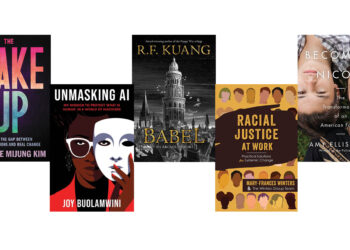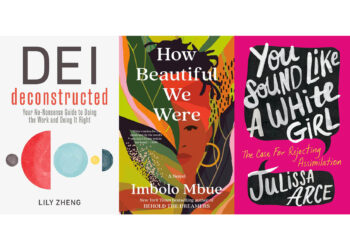Editor’s Note: Continuing an annual tradition, we take a moment to pause at year’s end to look back on the best books we encountered. As always, this is not a “best books of 2016″ list, but a list of the best books the Chefs read during 2016 — the books might be classics, a few years old, or brand new. This is one of the great things about books in all forms — they endure, invite visitation and revisitation, and beckon with ideas. Here’s Part 1 of our list, Part 2 can be found here.
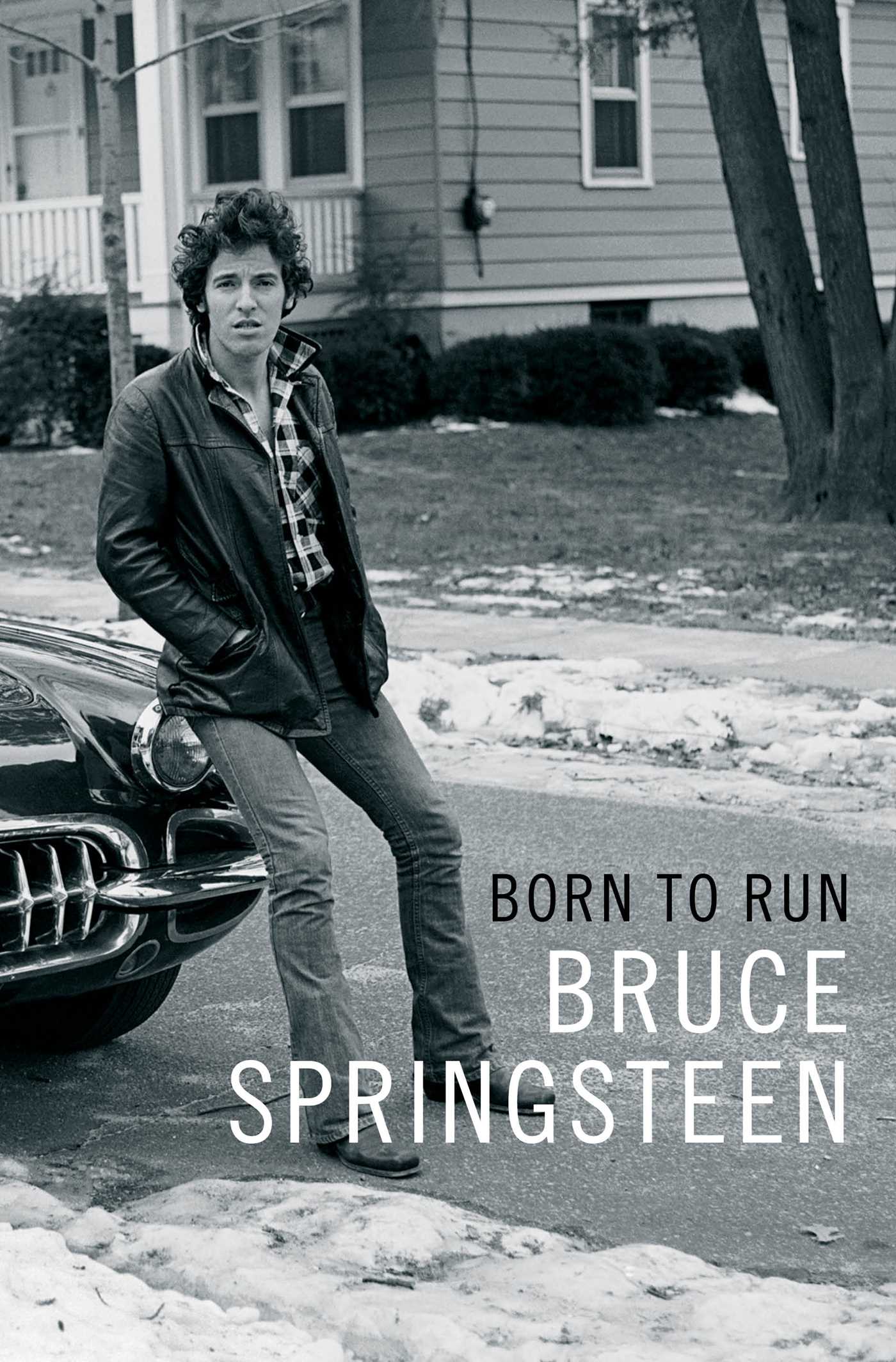 Kent Anderson: My favorite book of the year was Born to Run by Bruce Springsteen, a fact that surprises me still. At most, I’ve been a casual fan of Springsteen, have never seen him in concert, listened to his music occasionally, and generally viewed him as a little corny. No longer. His autobiography is an engrossing read written by a poet who veers between clear, confessional prose to blazing and passionate lyricism that explode from the page. It is an imperfect autobiography, but in the way that makes it even greater, as there is clearly an artist’s voice — imperfections and personal quirks and all — at the heart of it. So, when an editor missed a chronological error due to overlapping memories, I paused, but was soon swept back into the river of Springsteen’s prose. Needless to say, I’ve now downloaded every album Springsteen released, have him in heavy rotation in my life, and have to live with the regret of never having seen him perform live (however, two concert DVDs in 5.1 surround assuaged my regrets to some extent). A wonderful read about a true American success story and a music and media era now long gone, Born to Run may be your perfect gift to give or receive this holiday season.
Kent Anderson: My favorite book of the year was Born to Run by Bruce Springsteen, a fact that surprises me still. At most, I’ve been a casual fan of Springsteen, have never seen him in concert, listened to his music occasionally, and generally viewed him as a little corny. No longer. His autobiography is an engrossing read written by a poet who veers between clear, confessional prose to blazing and passionate lyricism that explode from the page. It is an imperfect autobiography, but in the way that makes it even greater, as there is clearly an artist’s voice — imperfections and personal quirks and all — at the heart of it. So, when an editor missed a chronological error due to overlapping memories, I paused, but was soon swept back into the river of Springsteen’s prose. Needless to say, I’ve now downloaded every album Springsteen released, have him in heavy rotation in my life, and have to live with the regret of never having seen him perform live (however, two concert DVDs in 5.1 surround assuaged my regrets to some extent). A wonderful read about a true American success story and a music and media era now long gone, Born to Run may be your perfect gift to give or receive this holiday season.
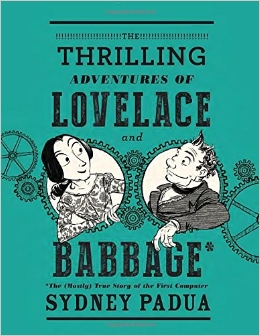 Jill O’Neill: My favorite read in 2016 was The Thrilling Adventures of Lovelace and Babbage by Sydney Padua.
Jill O’Neill: My favorite read in 2016 was The Thrilling Adventures of Lovelace and Babbage by Sydney Padua.
This is a delightful combination of fact and fiction about the partnership that existed between the two early Victorian computing pioneers, Charles Babbage and Ada Lovelace. Author Sydney Padua is a Canadian-born animator and cartoonist who initially drew a comic about Ada Lovelace back in 2009 in support of Suw Charman-Anderson’s effort to create awareness of Lovelace as an exemplar of Women in Technology. She admits herself that she knew very little about either Lovelace or Babbage when she began, and was depressed by the final ending of both — Lovelace dying at the age of 36 and Babbage living to be a frustrated curmudgeon in his 70’s whose envisioning of the analytical engine was largely dismissed. So in a remarkably clever combination of history and whimsy, she developed an alternate history (thoroughly based in factual understanding) of their lives.
The well-documented narrative is composed of a graphic novel, each page of comic panels being accompanied by footnotes at the bottom, well-researched but carrying with them some delightful humor. At the end of each chapter, there are additional and sometimes lengthy end notes with additional information and in multiple appendices at the end are primary source documents. Padua’s narrative sparkles with humor, bursting into uproarious hilarity when the cartoon panels and the footnotes get into an argument across multiple pages of one chapter. At the same time, neither Babbage nor Lovelace are whitewashed in this treatment; he’s a half-mad, socially inept visionary and she’s the practical mathematician capable of translating his vision into something potentially useful, even as she falls victim to habits of compulsive gambling and horse racing.
One might think that the form of the graphic novel would interfere with the briefer narratives contained in the footnotes and endnotes, but everything works together in complementary fashion as an assemblage of substantive information presented in a most engaging fashion. The reader walks away with a much fuller understanding of the two historical figures.
Particularly fascinating (for me, at least) is that – as part of her research for the book — Padua actually developed an animation of the Analytical Engine which was included in a fabulous talk she gave to Google engineers in 2015 (video here, you can see her cartoon panels during the first 25 minutes and then she shows her animation of how Babbage’s machine would actually have operated.) Imagine how intimidating it might be to be speaking about computers as a non-specialist to Google employees!
The British Society for the History of Mathematics awarded the book their 2015 Neumann Prize, and The Thrilling Adventures of Lovelace and Babbage was a short-listed nominee for that year’s Eisner Prize. I can’t imagine how this book didn’t make the NY Times bestseller list in 2015, but it ought to have done. It’s a clever work and, in many ways, actually brilliant in its presentation.
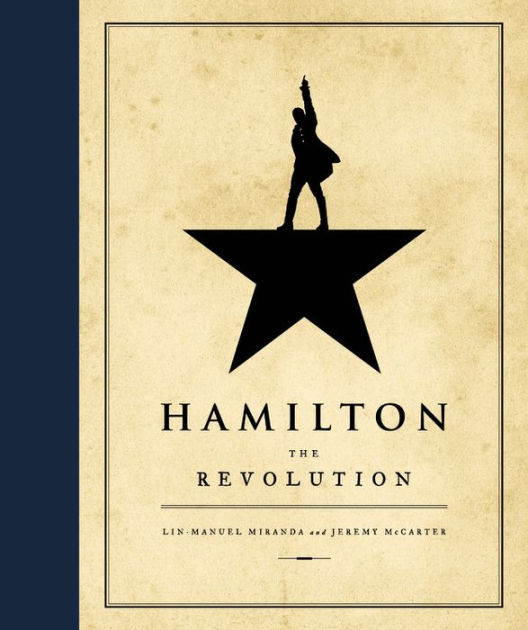 Karin Wulf: Even this annual Scholarly Kitchen Best Book choice feels especially weighty; 2016 seems to have delivered the accumulated misery of history and it’s hard not to reflect on that in every possible venue. A lot of books shifted my focus or thinking this year, but for offering an opportunity to think, revel, and rethink nothing eclipsed the musical Hamilton. Debates about the historical representations and interpretations, the casting, choreography and of course the incredible music saturated popular and scholarly culture alike. The emphatic embrace of a complex, often ugly American founding combined with a contemporary sensibility about the power of multiculturalism makes Hamilton worth all the ink that’s been spilled describing and analyzing its importance.
Karin Wulf: Even this annual Scholarly Kitchen Best Book choice feels especially weighty; 2016 seems to have delivered the accumulated misery of history and it’s hard not to reflect on that in every possible venue. A lot of books shifted my focus or thinking this year, but for offering an opportunity to think, revel, and rethink nothing eclipsed the musical Hamilton. Debates about the historical representations and interpretations, the casting, choreography and of course the incredible music saturated popular and scholarly culture alike. The emphatic embrace of a complex, often ugly American founding combined with a contemporary sensibility about the power of multiculturalism makes Hamilton worth all the ink that’s been spilled describing and analyzing its importance.
While the show itself is an extraordinary if ephemeral experience for the audience, the Hamilton recording and now the Hamilton Mixtape is widely available. Since April there has also been this marvelous book. Lin-Manuel Miranda and Jeremy McCarter’s Hamilton the Revolution is far more than a souvenir. As a material object the book gives a delightful nod to the eighteenth century. The full title, Hamilton the Revolution: Being the Complete Libretto of the Broadway Musical with a True Account of Its Creation And Concise Remarks on Hip-Hop, the Power of Stories, and the New America, riffs on the prose-y titles with sub-titles and sub-sub-titles of the period, while the faux leather binding with raised bands on the spine, deckle edges on uncoated paper and unconventional size gestures at what might have been on a shelf in Alexander Hamilton’s library.
The contents deliver more than the promise of the package. This isn’t a book you read from cover to cover. The table of contents is only a guide, and there is no index. The book is structured by the libretto annotated by Miranda and the progress of Hamilton from Miranda’s brain and collaborations (including images of his notebooks) to the Broadway opening, interspersed with essays by Miranda and his team. The essays explore such topics as the meaning of the characters for actors interpreting them (Renee Elise Goldsberry on Angelica Schuyler, Daveed Diggs on Thomas Jefferson, and Christopher Jackson on George Washington are especially insightful), the creation of the show’s choreography, costuming, lighting and set design, and what they term the “hurricane” of popular attention and reaction. Miranda annotates details like the “Show time!” reference to New York City’s subway dancers, and expands on profound considerations such as why slavery in a “Cabinet Battle #3” was cut, and what it means to write and stage a show with three black presidents during the administration of Barack Obama, the first black president. This back and forth from the eighteenth to the twenty-first centuries, holding themes constant, is one key to Hamilton’s genius.
But “Who lives, who dies, who tell your story?” is still the story of Hamilton, and the caution in the tale, told through the musical in song, dance and spectacle and through the book in more textual depth and detail. Fake news, information overloaded and under-examined, what is headline or below the fold or nowhere to be found — narratives compel us, drive our social and political practice and are shaped by opportunity and context.
 Joe Esposito: When the request to recommend the “best book” for 2016 was presented to the divided personality that is Joe Esposito, voices from both sides of the divide spoke up. On one side there was Joe Prime, a serious, civic-minded persona, who naturally pointed to the magnificent work The Gene by Siddhartha Mukherjee. The subtitle of this wonderful book is An Intimate History, and Mukherjee delivers. There is a historical survey of genetic science, the political implications of the science as it was understood at particular times (we are invited to consider the extent to which the Nazis’ racial policy was based on bad science), and an engaging discussion of the ethical issues concerning genetic manipulation. This book cannot be recommended highly enough.
Joe Esposito: When the request to recommend the “best book” for 2016 was presented to the divided personality that is Joe Esposito, voices from both sides of the divide spoke up. On one side there was Joe Prime, a serious, civic-minded persona, who naturally pointed to the magnificent work The Gene by Siddhartha Mukherjee. The subtitle of this wonderful book is An Intimate History, and Mukherjee delivers. There is a historical survey of genetic science, the political implications of the science as it was understood at particular times (we are invited to consider the extent to which the Nazis’ racial policy was based on bad science), and an engaging discussion of the ethical issues concerning genetic manipulation. This book cannot be recommended highly enough.
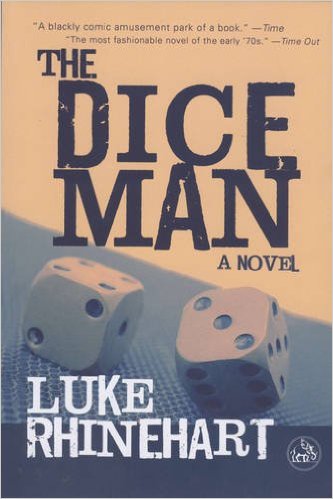 Alas, Joe Prime is the junior partner in this personality. Reckless and seditious alt-Joe naturally took a whack at this as well, and chose to recommend the edgy satire The Dice Man by Luke Rhinehart. Published in 1971 and regarded as a cult novel, alt-Joe does not understand how it took him decades before he read this, though he had been a huge fan of John Barth’s thematically related The End of the Road and had The Dice Man recommended to him many times. The Dice Man tells the story of Luke Rhinehart (the protagonist and the pseudonymous author share the name), a New York psychiatrist, who develops a form of therapy based on rolling the dice. Should you stay with your wife or leave her for the cutie at the office? Roll the dice. Should you quit your job or ask for a promotion? Roll the dice. Rinehart starts a movement, with dicing centers around the world. People’s lives are wrecked by this, but the dice roll on. Along the way there is something to offend everyone (with alt-Joe cackling in the background), though the send-up of traditional psychiatric sessions alone are worth the price of admission. This book is not for everyone, but if you are fascinated and amused by Geek Love and Blue Movie, this book is for you.
Alas, Joe Prime is the junior partner in this personality. Reckless and seditious alt-Joe naturally took a whack at this as well, and chose to recommend the edgy satire The Dice Man by Luke Rhinehart. Published in 1971 and regarded as a cult novel, alt-Joe does not understand how it took him decades before he read this, though he had been a huge fan of John Barth’s thematically related The End of the Road and had The Dice Man recommended to him many times. The Dice Man tells the story of Luke Rhinehart (the protagonist and the pseudonymous author share the name), a New York psychiatrist, who develops a form of therapy based on rolling the dice. Should you stay with your wife or leave her for the cutie at the office? Roll the dice. Should you quit your job or ask for a promotion? Roll the dice. Rinehart starts a movement, with dicing centers around the world. People’s lives are wrecked by this, but the dice roll on. Along the way there is something to offend everyone (with alt-Joe cackling in the background), though the send-up of traditional psychiatric sessions alone are worth the price of admission. This book is not for everyone, but if you are fascinated and amused by Geek Love and Blue Movie, this book is for you.
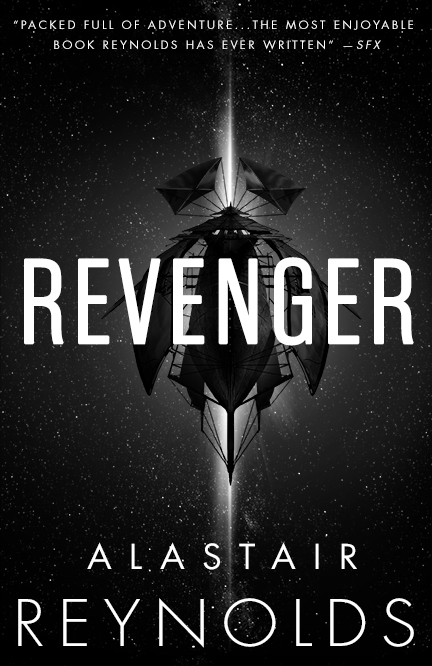 David Smith: My selection is Revenger by Alastair Reynolds. It’s not gone too well for our little corner of the Galaxy. Great civilizations have risen and then rotted from the inside and as a result, humanity scrabbles through the ruins (both human and alien) of antique travelers from distant stars. There’s a ship and a captain and sisters on the run from their father, signing up to go poke around the ruins of various worlds, and gather and sell the bounty that they find. But where there is commerce, there are pirates. One in particular: Bossa Sennen, is a name feared throughout this part of the galaxy. This then is a tale of adventure, horror, violence and revenge (and some heroism too) all set in an immaculately realized series of worlds and stars and humans of all baselines (and aliens too). If you’ve never read anything from Alastair, then this is a good a place to start as any. Alastair is a former European Space Agency astrophysicist who took up Sci-Fi as a hobby and parlayed it in to a full time occupation (I’m just guessing here, but I bet there’s a few Kitchen readers (and Chefs too!)) who dream of doing such a thing. His books are always worth the time and, he’s used sci-fi worlds to dabble in all sorts of story types as well. Highly recommended.
David Smith: My selection is Revenger by Alastair Reynolds. It’s not gone too well for our little corner of the Galaxy. Great civilizations have risen and then rotted from the inside and as a result, humanity scrabbles through the ruins (both human and alien) of antique travelers from distant stars. There’s a ship and a captain and sisters on the run from their father, signing up to go poke around the ruins of various worlds, and gather and sell the bounty that they find. But where there is commerce, there are pirates. One in particular: Bossa Sennen, is a name feared throughout this part of the galaxy. This then is a tale of adventure, horror, violence and revenge (and some heroism too) all set in an immaculately realized series of worlds and stars and humans of all baselines (and aliens too). If you’ve never read anything from Alastair, then this is a good a place to start as any. Alastair is a former European Space Agency astrophysicist who took up Sci-Fi as a hobby and parlayed it in to a full time occupation (I’m just guessing here, but I bet there’s a few Kitchen readers (and Chefs too!)) who dream of doing such a thing. His books are always worth the time and, he’s used sci-fi worlds to dabble in all sorts of story types as well. Highly recommended.
Other books (still working on them): Mariana Mazzucato’s excellent (if dense and requiring of your FULL attention) The Entrepreneurial State, and Joy of Joys! James Gleick has another Magnum Opus with Time Travel – A History.
Discussion
12 Thoughts on "Chefs’ Selections: The Best Books Read During 2016 Part 1"
This is a place for serious comments. So
BRUUUUUUUUUUCE!
Also – have just ordered the Lovelace book. Looks Awesome.
Allow me to also endorse Karin’s recommendation, which is a stellar book in every respect (“Hamilton: The Revolution”). It’s made with great care and attention to detail. If someone you know is obsessed with the musical (or should become obsessed), this is the book for them.
For all the talk about a “Kitchen perspective,” I cannot help but notice how diverse this reading list is.
Glad you like Hamilton. Are you aware that the Electoral College was HIS idea? Also, he wanted a King, not a President. Hamilton was a huge fan of monarchies. Luckily, Washington didn’t want to be King.
Thanks, DF! Always glad when people are paying attention to early American history. Indeed Hamilton’s views were pretty anglophile, certainly in comparison to his oft-nemesis Jefferson. He wrote so much and thought in such subtle ways about governance that I hesitate to characterize him as a monarchist (just as I’d hesitate to characterize him as an abolitionist in the way that Miranda does in the musical but then discusses in the book– not in depth look at the historical scholarship but a reasonable assessment of why he made that choice). It’s really fun to see how much discussion the musical has kicked up and if you have a chance I’d highly recommend the link to the Public Historian review and response.
I just ordered all of these– am hoping my computer science parents will love Lovelace and Babbage as much I think I will. (Shhhh…. Bruce bio is for the spouse’s xmas stocking.)
Born to Run is no doubt a better written book than Down Thunder Road published in 1992 which was the story of the early days and Bruce’s legal challenges in regaining the rights to his work which he had signed away in a contract with Mike Appel, his first agent. His concerts are amazing – well worth the investment.

